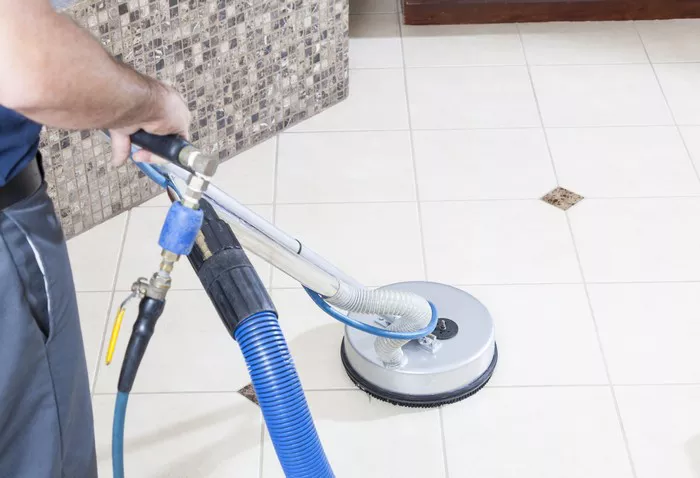Cleaning floors efficiently and effectively requires the right tools and techniques. A floor scrubber is a powerful machine designed to clean various types of flooring surfaces. It helps remove dirt, grime, and stains more effectively than traditional methods. This article provides a detailed guide on how to clean a floor with a floor scrubber, ensuring a thorough and efficient cleaning process.
1. Understanding the Floor Scrubber
A floor scrubber is a specialized cleaning machine used to clean large floor areas. It combines scrubbing, washing, and drying into one process, making it ideal for commercial and residential cleaning.
Components of a Floor Scrubber
- Brushes or Pads: These are used to scrub the floor. Brushes are usually used for rough surfaces, while pads are suitable for smooth floors.
- Solution Tank: Holds the cleaning solution or detergent.
- Recovery Tank: Collects the dirty water and debris removed from the floor.
- Squeegee: Helps to remove excess water and ensure the floor dries quickly.
Types of Floor Scrubbers
- Walk-Behind Scrubbers: Operated by walking behind the machine. Suitable for smaller or medium-sized areas.
- Rider Scrubbers: Designed for larger areas. The operator rides on the machine, making it suitable for extensive cleaning tasks.
2. Preparing for Cleaning
Preparation is key to effective floor cleaning. Proper preparation ensures the cleaning process runs smoothly and delivers the best results.
Gather Necessary Supplies
- Floor Scrubber: Ensure the machine is in good working condition.
- Cleaning Solution: Choose a solution appropriate for the type of floor and the level of dirt.
- Protective Gear: Gloves and safety goggles protect against cleaning chemicals and debris.
Pre-Cleaning Inspection
- Check the Machine: Inspect the scrubber for any damage or issues. Ensure brushes, pads, and tanks are properly attached and functioning.
- Inspect the Floor: Look for any large debris or objects that could obstruct the cleaning process. Remove these items before starting.
3. Setting Up the Floor Scrubber
Proper setup of the floor scrubber is crucial for effective cleaning.
Prepare the Cleaning Solution
- Dilute the Solution: Follow the manufacturer’s instructions to dilute the cleaning solution. Use the correct ratio to ensure effectiveness without causing damage to the floor.
- Fill the Solution Tank: Pour the diluted cleaning solution into the solution tank of the scrubber.
Adjust Machine Settings
- Brush Speed: Adjust the brush speed according to the type of floor and the level of dirt.
- Water Flow: Set the water flow rate to ensure adequate coverage without over-saturating the floor.
4. Cleaning the Floor
Once the floor scrubber is prepared, follow these steps to clean the floor effectively.
Start the Scrubber
- Power On: Turn on the machine and allow it to reach the appropriate speed.
- Engage the Brushes: Lower the brushes or pads to make contact with the floor.
Scrub the Floor
- Move Slowly: Operate the scrubber in a slow, steady manner. This ensures thorough cleaning and prevents streaks.
- Overlap Passes: Make overlapping passes to cover the entire floor area. Avoid missing spots by ensuring even coverage.
Manage Water and Solution Use
- Monitor Solution Levels: Keep an eye on the solution tank. Refill with more cleaning solution if needed.
- Empty Recovery Tank: Regularly check and empty the recovery tank to prevent overflow and maintain cleaning efficiency.
see also: How Floor Scrubbers Work: A Comprehensive Guide
5. Post-Cleaning Procedures
After completing the cleaning, proper maintenance of the floor scrubber and the floor itself is essential.
Clean the Floor Scrubber
- Empty and Rinse Tanks: Empty the solution and recovery tanks. Rinse them thoroughly to remove any residue.
- Clean Brushes or Pads: Remove and clean the brushes or pads. Ensure they are free of debris and detergent.
Inspect the Floor
- Check for Residue: Ensure the floor is free of cleaning solution residue. If needed, perform a quick rinse with clean water.
- Dry the Floor: Allow the floor to dry completely before allowing foot traffic or placing furniture back in place.
6. Maintenance of the Floor Scrubber
Regular maintenance of the floor scrubber ensures its longevity and optimal performance.
Routine Checks
- Inspect Components: Regularly check brushes, pads, and other components for wear and tear.
- Replace Worn Parts: Replace any damaged or worn parts to maintain cleaning efficiency.
Scheduled Servicing
- Professional Servicing: Schedule regular professional servicing for thorough maintenance and repairs.
- Follow Manufacturer’s Guidelines: Adhere to the manufacturer’s recommendations for maintenance and servicing.
7. Safety Considerations
Safety is crucial when using a floor scrubber to prevent accidents and ensure effective cleaning.
Proper Use of Cleaning Solutions
- Read Labels: Always read and follow the safety instructions on cleaning solutions.
- Ventilation: Ensure proper ventilation when using strong cleaning chemicals.
Safe Operation
- Avoid Slips and Falls: Be cautious of wet floors to prevent slips and falls.
- Keep Electrical Components Dry: Ensure electrical components of the scrubber remain dry to avoid electrical hazards.
Conclusion
Using a floor scrubber effectively involves understanding the machine, preparing properly, and following a systematic cleaning process. By preparing the floor scrubber, setting it up correctly, and adhering to post-cleaning and maintenance procedures, you can achieve a clean and well-maintained floor. Regular maintenance of both the floor and the machine ensures long-lasting performance and optimal results.

